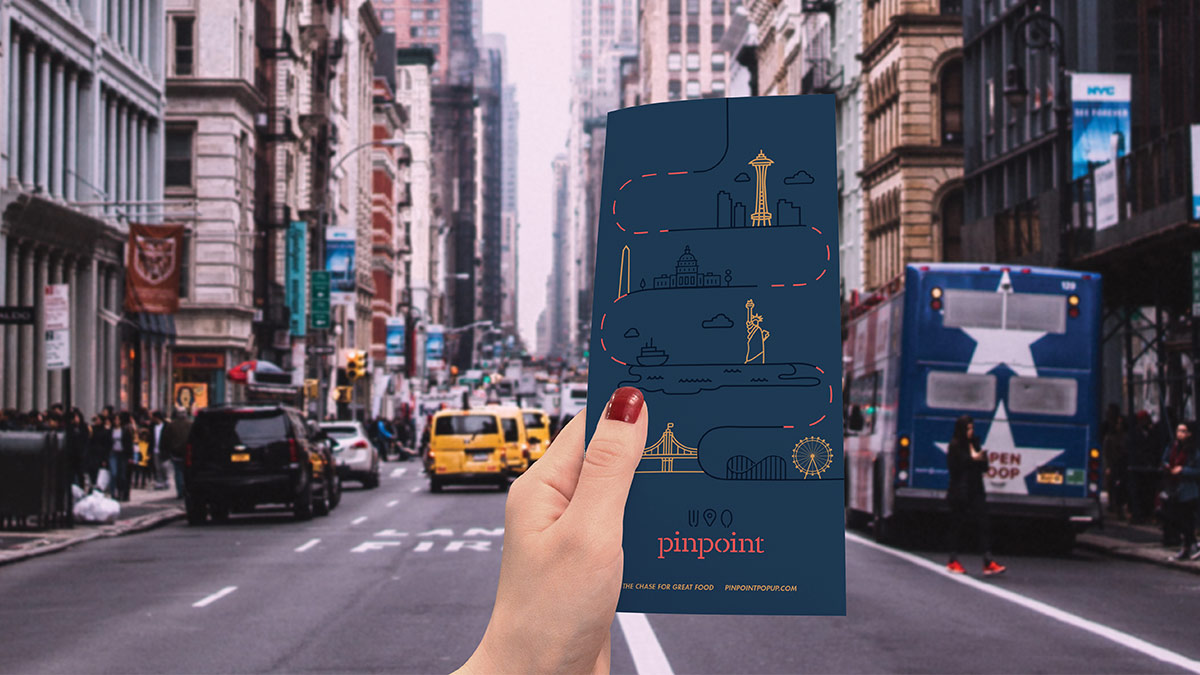
Pinpoint
Junior project
Spring 2017
Designers: Carlie Vanklompenberg, Andrew Kudwa, & Tiffani Tozer
The project requirement was to brand a restaurant experience that heavily depends on technology. The restaurant was also required to: be unique, entertaining, applicable, and relate to its applicable archetypes.

EXPERIENTIAL DINER
- 74% want events that promise to be one-of-a-kind
- 84% wants a unique menu or theme
- 76% wants a memorable location
- 83% would rather attend these events in non-traditional venues over restaurants

The chef changes at each location. They are chosen based on their skill level and popularity in the community.

Pinpoint gives chefs the freedom to create and customize their own menu. Chefs use fresh ingredients local to the area that they are from.

THE CRATE
The crate is how Pinpoint is able to move around. The base of Pinpoint is located inside a shipping crate.

HOW IT WORKS
All of the sides fold down into creating the restaurant. Inside the shipping crate, after it’s folded down, is where the chefs prepare the food.




THE ATMOSPHERE
Since this restaurant does not actually exist, we had to consider how the restaurant would feel and look like. Our group considered what the chairs and tables would look like. How the food would be served, and the silverware that would be used to eat it. We wanted the idea of fresh local ingredients as well.


The majority of the landing page shows a 360 view of an upcoming location. The navigation can be found on the left side of the page. The flyer incorporates the symbolic red dashes, and icons from popular cities that Pinpoint has visited. The hints give clues to the location in a fun and inviting way that influences the users to find Pinpoint.

BANNER STAND
Red dashes are marked on the sidewalks surrounding the current Pinpoint location. The dashes lead to a banner stand next to the restaurant.

SNAPCHAT FILTER
After arriving to the Pinpoint location you can share to your friends that you’ve “caught” us.

